
I recently attended the Tech UK 'Tech Led Decarbonisation Showcase' event which gave 6 organisations the opportunity to showcase their contributions to sustainability through developing tech solutions and platforms to aid their decarbonisation efforts, followed by some energising discussions.
Alex Santon from Microsoft highlighted the Microsoft Cloud for Sustainability. Basing servers in the cloud, rather than on-premises, is known to be up to 90% more sustainable. Users can benefit from the management of resources at scale, energy consumption is more efficient, less hardware is produced, and there is far less end of life IT waste. Cloud computing requires less physical hardware to run large workloads and store large quantities of data as resources can be shared, used flexibly and run according to renewable energy availability. Cloud computing with Microsoft allows users of its data centres to benefit too as it works towards its aims to be carbon negative, water positive, and a zero waste organisation by 2030.
As part of the Cloud for Sustainability, Microsoft showed various applications that are available on Azure data centres. The Emissions Impact Dashboard & Carbon calculator is free to use and monitors and reports on greenhouse gas emissions associated with cloud usage. This tool can be used across Azure subscriptions providing transparency on emissions in the cloud. We do not currently report on cloud emissions but this does not mean we should not understand them and work towards reducing them. They are part of scope 3 emissions as described in GHG protocol and as such are optional.
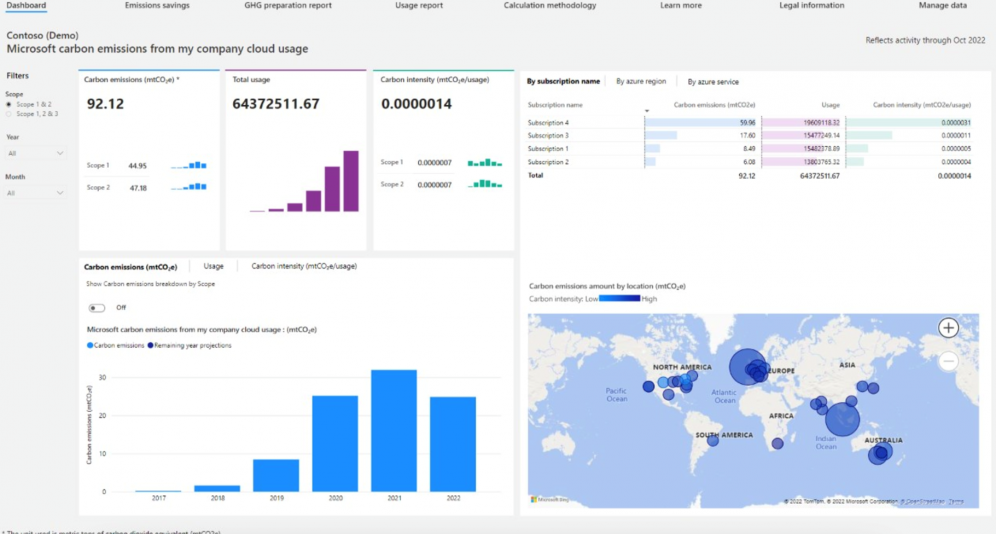
As an initial take away the dashboard shows the carbon savings associated with running the software in the cloud rather than on hardware. The dashboard utilises an open source data model which can be used by partners to provide more tools and applications. Scope 3 is often the largest source of emissions and as climate change continues, it's important to start addressing scope 3 emissions and what can be done to reduce them. Using the above tool would give insight and more control over the emissions our products and services cause. We cannot alter what we do not measure.
A key take away for me was the free availability of this data. Microsoft are doing a lot to reduce the climate impact of our data centre usage which can be taken advantage of by all organisations. This is something we could potentially do for our clients, as it is an open source data model, emissions data could be included in client applications to help their reporting.
AWS provide a similar tool.
The speaker then introduced Planetary Computer Data, aimed at putting global-scale environmental monitoring capabilities in the hands of scientists, developers, and policy makers, enabling data-driven decision making.
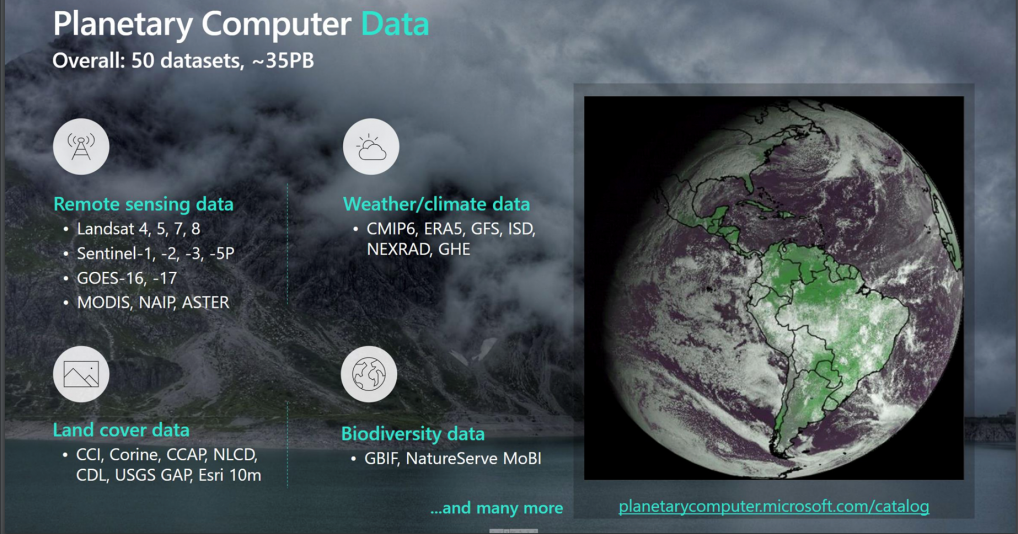
It collects over 50 environmental and earth observation datasets from around the world, built on open source, open source tools, and open standards. Examples of applications already built are:
An amazing free resource; how can we utilise it and help solve for good?
Microsoft is also on the steering committee of and helped set up the Green Software Foundation. Discovering the work this foundation do was a major take away for me. There's no point in re-inventing the wheel when we can look to them for suggestions, best practices, standards, and certification. GSF wants software to become part of the climate solution, rather than be part of the climate problem, and is focused on reducing the negative impacts of software on our climate by reducing the carbon emissions that software is responsible for. It looks to achieve this through:
The primary focus of GSF is on creating an ecosystem for developing green software and has been created for everyone building software, helping organisations on their journey to reduce software emissions. They provide thought leadership on software design and languages together with data storage and transmission with code in github repos. They are working on these projects:
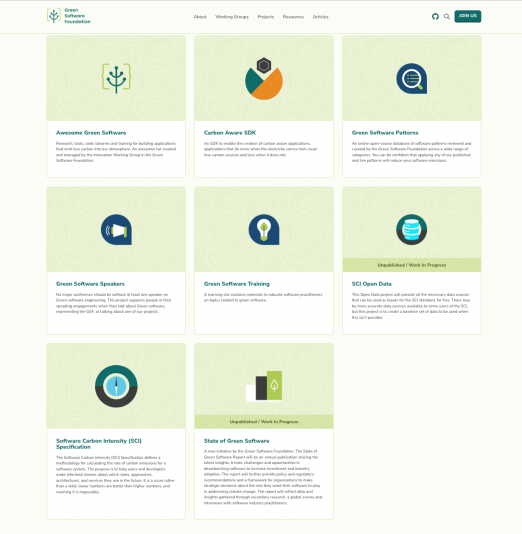
Climate Essentials were up next and described their online carbon management system by measuring, managing, and reducing emissions. It also follows the GHG protocol to measure carbon emissions according to the 3 scopes. Users input all of their data and it calculates emissions per revenue/per employee etc. The key benefits of this tool are that it encourages businesses to set up carbon KPIs which trickle through the whole organisation and, through the forecasting tool, the orgainsation can see which actions will have the biggest impact and prioritise accordingly.
I was left thinking about how Methods could replicate such a tool within Azure, based upon the Microsoft emissions dashboard and its underlying open source data model, and further the options of being able to share this with our clients, alongside the project deliverables.
Next Anthony Levy from Circularity First highlighted that IT contributes 4% of global emissions and is expected to increase rapidly. They are a company that refurbishes hardware as part of the solution they provide. They were very direct with their statement that it’s now or never!
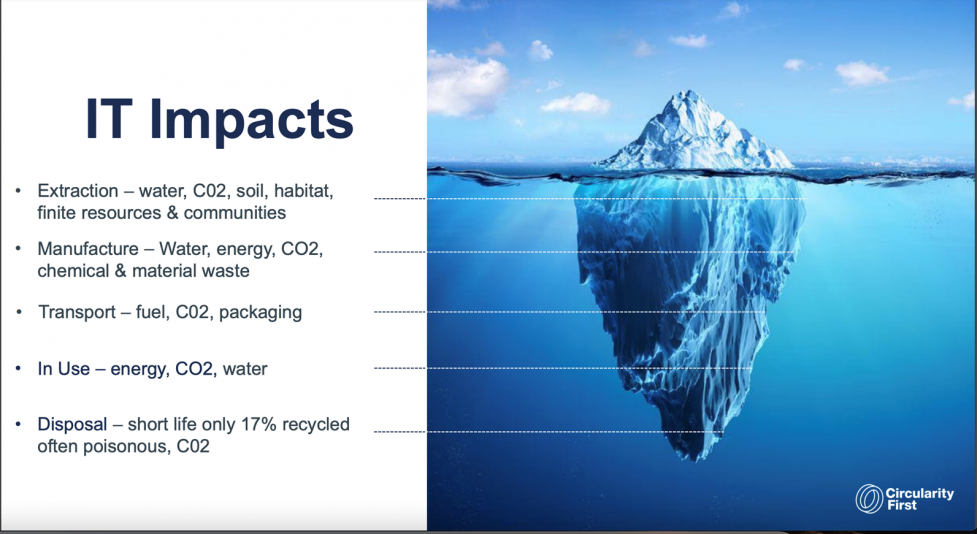
Numbers suggest that IT contributes between 5% and 20% to a company’s Scope 3 carbon footprint. With 80% of that carbon coming from manufacture, we have to extend the life on what we have and stem the tide on new. Move towards refurbished hardware instead of brand new. Extend life.
During their presentation Anthony made the following points:
The key message was that we all need to include carbon footprint of IT hardware, products, and services into our carbon reduction plan and then integrate them effectively into our company strategy and culture. A key point for me is having sustainability within the company strategy not as an optional add on.

Mathias Karady from Sage Earth described Sage’s Carbon Impact Tool – which is free to all users of their software.
The carbon accounting tool:
The model takes the financial transactions and builds an AI model is built and trained to bucket the transactions. The carbon footprint is calculated for each bucket. The model and outcomes are amended according to manual activity based user input. This is an interesting use of AI using financial transaction data that is already held for clients. I imagine there could be a wide margin for error in bucketing and estimating the carbon emissions, as it will depend upon how accurately the transaction is described and how wide the buckets are. For example if I look at travel, do they just apply an average emission per pound spent on travel per mode of transport, as tickets vary widely in price?
The model and tool then comes up with recommendations such like this:
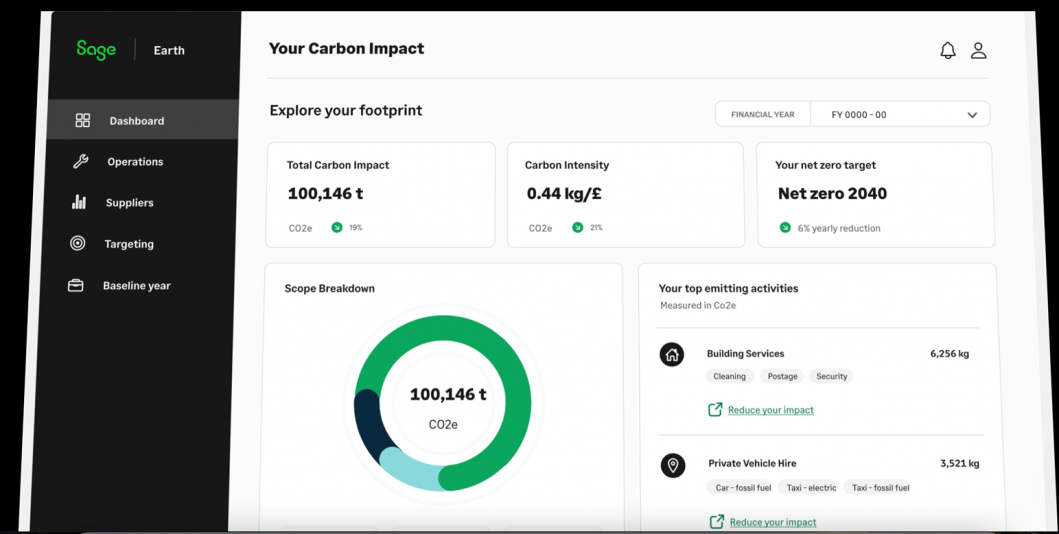
There then followed a Q&A session where we discussed how organisations can engage all of their employees (set KPIs, provide tools, data, be transparent. Need for top level KPIs which trickle down to all employees, were some of the discussion points), and how do we engage senior management (look at cost benefits as well as sustainability benefits if they are driven more by profit e.g. travel, low hanging fruit first).
A problem raised was that there are so many different tools and ways of calculating carbon emissions , there needs to be a consistent message (language and ways of measuring) in order for companies to engage.
It was exciting hearing how these businesses have been working towards their reduction targets and has inspired me to facilitate a future workshop at Methods to focus on new concepts and spark further conversations around sustainable practices within our own organisation.

Bee Jenkins, Scientific Developer


